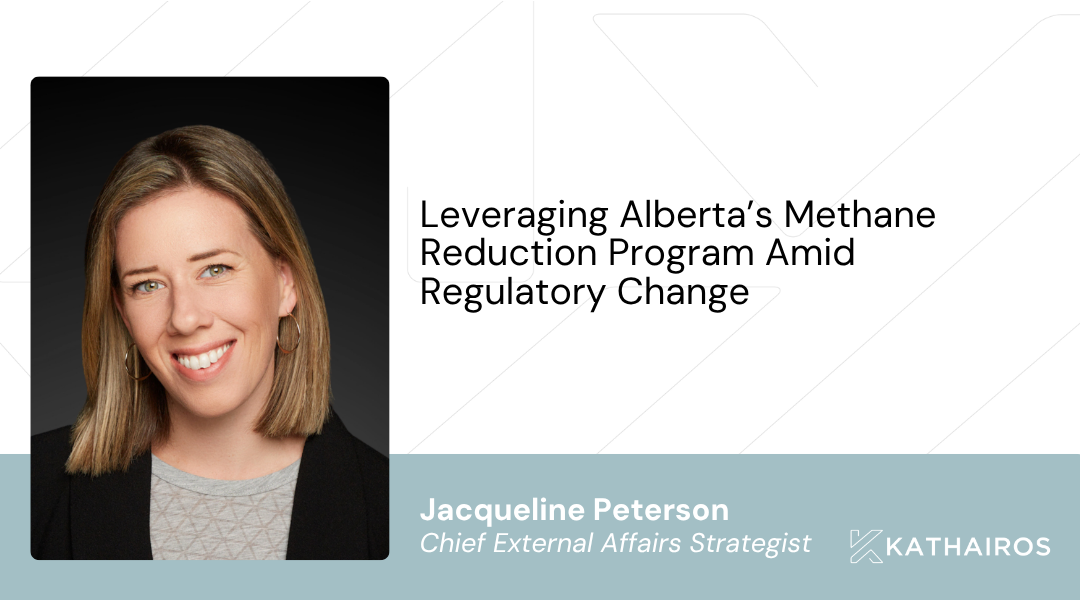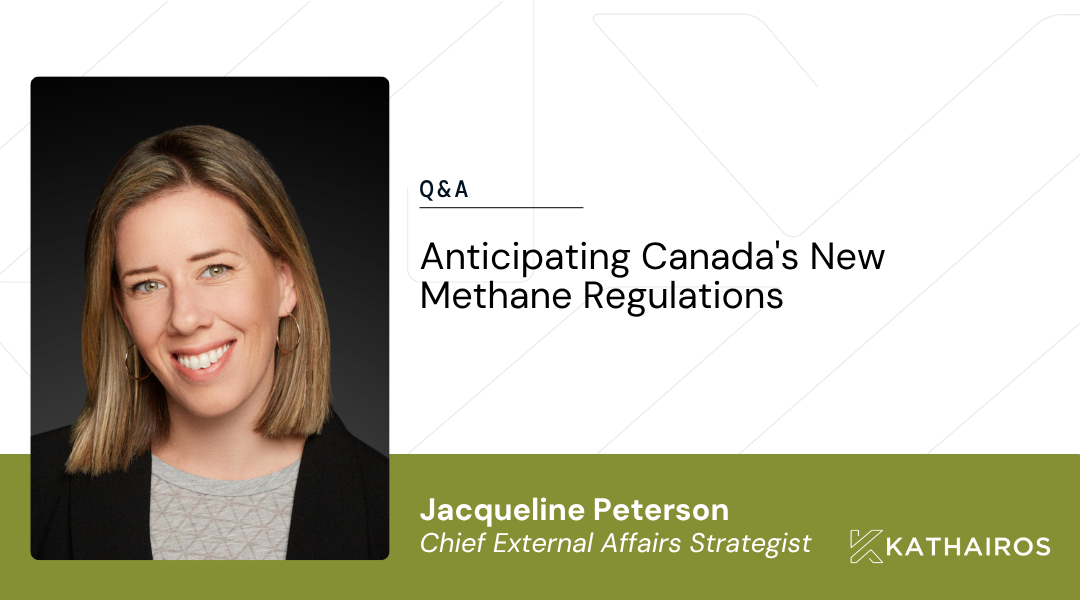
Kathairos has emerged as the leading North American solution for methane elimination from pneumatics, with more than 2,400 systems in operation across North America and over 70 major oil and gas producer partners.
In this post
On November 12, 2025, Emissions Reduction Alberta (ERA) announced $22.4M in funding towards methane reduction from oil and gas operations through the “Methane Reduction Deployment Program” (MRDP). The intent of the program is to accelerate the deployment of commercially-available methane mitigation technologies by offering ERA funding to early adopters1.
This grant is being released amid expectations of new methane regulations being finalized by the federal government, which would require near-elimination of methane venting from a variety of upstream and midstream sources by 203023. Alberta oil and gas producers can leverage the available ERA funding to secure supply at a discount and be well positioned to meet the 2030 requirements.
Basic Information
The program provides up to $1M per company to reduce emissions through the deployment of ERA-approved technologies, such as pneumatic conversions with nitrogen. Details include:
- Applicants must be upstream or midstream oil and gas companies (not technology providers)
- Only non-TIER-regulated facilities located in Alberta are eligible for funding
- Funding for 50% of eligible project costs, paid in two installments
- Projects to take max. 2 years to complete, must finish by March 31, 2029
- Project participants must choose from a variety of approved eligible technologies (see list here)
- Both capital and operating expenses are eligible project costs; costs must be incurred over the project duration
- Emissions reductions must continue for at least 5 years from project start; ERA reserves right to audit
Maximizing value: Designing a high-impact project
The ERA allows for aggregate projects where multiple sites can be retrofitted at a given time. Each site must be retrofitted with the same technology type and aggregate projects must be contained within a single region. (Companies can submit multiple projects, each with a different technology and/or regional application, up to the $1M cap.)
Converting natural-gas driven pneumatics to nitrogen is one of the cheapest ways to reduce the most emissions across the most number of sites. The ERA funding gives producers the opportunity to convert dozens, maybe even hundreds, of sites to nitrogen in one easy-to-manage project. Kathairos has successfully completed large campaigns installing 300+ tanks within 3 months for large U.S. producers. For companies that have hundreds of sites that will need to be addressed by 2030, the MRDP is an opportunity to start thinking at scale and make early headway.
A project that involves mass nitrogen-unit deployments can be done easily and quickly, allowing for quick progress on pneumatic retrofits with minimal labour and overhead costs. Because nitrogen eliminates 100% of on-site pneumatic methane venting, producers know they’re maximizing funds available for methane reduction.
Kathairos offers 2- and 5-year capital leases and can arrange tie-in services in compliance with ERA requirements. With a 20-year warranty, no moving parts and all maintenance included, producers can be confident that the nitrogen systems will still be going strong, long after the ERA’s 5-year project requirement.
The Offsets Question
It is currently possible, under the TIER program, to generate emission offsets from pneumatics or vent reduction projects. These offsets can be sold on Alberta’s TIER market and can oftentimes cover the entire cost of a methane reduction project. However, approved projects under the ERA methane program will seemingly not be able to generate offsets (or at least, any offsets generated will have to be transferred to the ERA. It is not entirely clear what this means in practice). The rationale for this ineligibility is that generating offsets from ERA-funded projects would result in “double-counting” – using TIER funds to generate TIER-approved credits.
However, this poses a dilemma for producers, who may see the offsets that could be generated from methane-reduction projects as more valuable than the ERA funding.
Currently, the Alberta TIER offset market is extremely soft amidst significant uncertainty. Offset prices are trading at a fraction of the legislated carbon price. However, the federal government under Carney’s leadership has doubled-down on industrial carbon pricing in recent announcements4. As a result, it is likely (but not guaranteed) that offset prices will significantly increase in coming months and years. Still, uncertainty persists as to timing and future market dynamics.
The good news is that both the ERA methane grant and starting an offset project benefit from early action. The ERA funds are available until they run out (“first come, first serve”). Meanwhile, the sooner you start an offset project, the longer you can generate offsets (until emission reductions are mandated by regulation). Luckily, Kathairos can support with both, given our experience in grant management and our high-quality offset management services.
We can provide side-by-side proposals – one for technology deployment under the ERA program, the other for developing an offset project – so producers can be confident that they’re making the right decision for their company.
Next Steps
Additional information on the Methane Reduction Deployment Program can be found on the ERA website. ERA is holding a webinar on November 27th, 2025, open to everyone.
The Program will remain open until funds are exhausted. Companies can register through the ERA portal, submit a pre-application, and then get access to the full application with costs and GHG workbooks.
Kathairos can support with all needed application documentation. Let us show you how easy eliminating pneumatic venting can be, no matter how many sites there may be. Email us directly.
Explore more posts from Kathairos



%20For%20website.png)